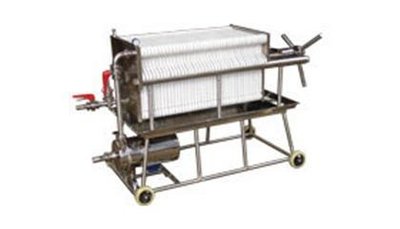Plate cardboard filter is a high-tech integrating high separation, concentration, purification and purification that has developed rapidly in recent years. At present, new domestic plate cardboard filters are constantly being developed, researched and applied. Stainless steel cardboard filters, Many aspects are close to the level of similar foreign products. As we all know, the current filter operation has entered the era of membrane filtration. With the continuous deepening of people's understanding of filter membranes, plate cardboard filters will be widely used in most people's filtration operations. Because , The plate type cardboard filter can be used alone as a fine filtration equipment, and the plate type cardboard filter can also be used as other purification devices (such as ion resin exchange, electrodialysis, reverse osmosis and ultrafiltration, etc.) to the pretreatment equipment.

The ultrafiltration equipment of plate type cardboard filter is a microporous filter membrane with the same pore size specification and rated pore size range of 0.001-0.02 microns. The ultrafiltration membrane adopts the pressure difference as the driving force. Membrane filtration. Ultrafiltration membranes are mostly made of acetate fibers or polymer materials with similar properties. It is suitable for the separation and concentration of solutes in the treatment solution, and is also often used for the separation of colloidal suspensions that are difficult to complete by other separation techniques. , The application field of plate cardboard filter is constantly expanding. Membrane filtration driven by pressure difference can be divided into three types: ultrafiltration membrane filtration, microporous membrane filtration and reverse osmosis membrane filtration. Their distinction is based on the ability of the membrane layer to intercept When the rated pore size range of the membrane is used as the distinguishing standard, the rated pore size range of microporous membrane (MF) is 0.02-10 μm; ultrafiltration membrane (UF) is 0.001-0.02 μm; reverse osmosis membrane ( RO) is 0.0001-0.001μm. It can be seen that the plate cardboard filter is suitable for the separation and concentration of the solute in the solution, or the separation of the colloidal suspension that is difficult to complete by other separation techniques.
Related News
- Filtration principle and operation of plate and frame filter press
- Different matters that should be paid attention to in the use of the filter plate of the diaphragm filter press
- What is the influence of the working period of the diaphragm filter press?
- The reason for the leakage of the box filter press
- Filter bag replacement and pressure condition of super essential oil filter
- The particularity of filter cloth used in plate and frame filter press
- What is the pressing principle of the diaphragm filter press?
- Introduction to filter maintenance
- What is the filtration speed, operation method and development direction of the filter?
- What is the impact of pump selection and insufficient pressure in filter presses?
- What are the technical characteristics of the plate cardboard filter?
- How does the plate cardboard filter work?
- How to make the plate cardboard filter last longer?
- What is the working principle of the plate cardboard filter?
- What are the advantages of the plate cardboard filter?
- What are the technical characteristics of the plate cardboard filter?
- Why choose a plate cardboard filter?
- What are the applicable scope of the plate cardboard filter?
- How to judge the quality of the filter plate of the high pressure diaphragm filter press
- Experts analyze the relationship between plate and frame filter press and climate


